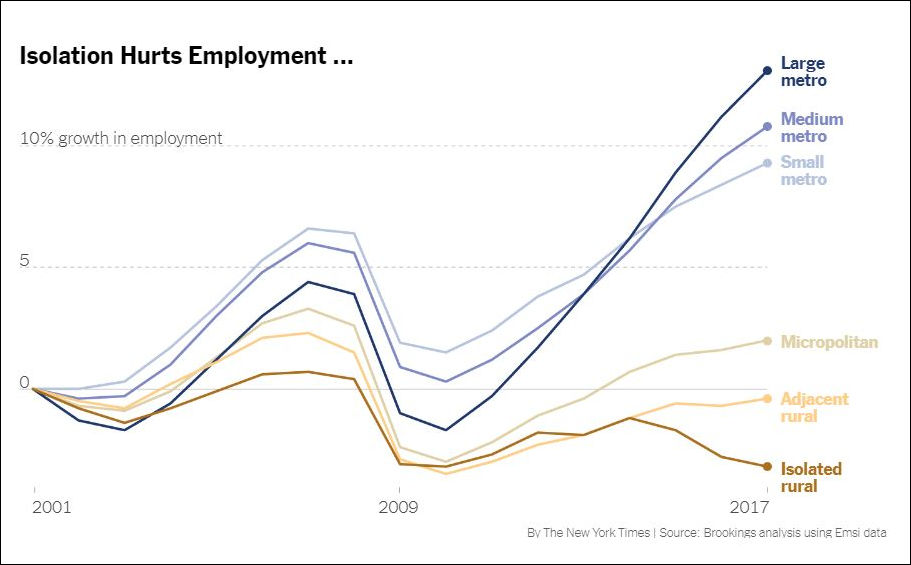The employment-growth gap between metropolitan areas and non-metro areas in the United States is displayed dramatically in this chart compiled by the Brookings Institution and published in the New York Times. The disparity in growth rates between metro and non-metro is old news. What I find intriguing — and even encouraging — is that the difference between large, medium and small metros is relatively small.
The chasm in economic growth between large metros and isolated rural areas is explainable largely by the so-called agglomeration effect — the huge advantage bequeathed by large labor markets with a wide range and great depth of technical, managerial and executive skills. This effect is so powerful that it overpowers big-metro drawbacks such as traffic congestion and high housing costs.
However, size is not destiny. Midsized metros like Richmond and Hampton Roads can prosper, and so can smaller metros such as Roanoke, Charlottesville, Lynchburg, and Winchester. While non-metro America is lagging overall, micropolitan areas outperform isolated rural areas. Small towns aren’t creating a large number of jobs, but they are at least holding their own.
Of course, there is considerable variability in each of these categories. Not all big metros are prospering equally. Not all isolated rural areas are falling behind. From an analytical perspective, it would be helpful to know which factors account for that variability. How much do state taxes matter? How important is the presence of a major research university? How does the rise and fall of agricultural and energy commodity prices drive rural booms and busts? What role do lifestyle amenities play? What about land use patterns and access to transportation assets such as ports, airports and interstate highways? If we knew, we could better invest finite public resources where they will yield the greatest benefit.
Hat tip: Stephen Moret



